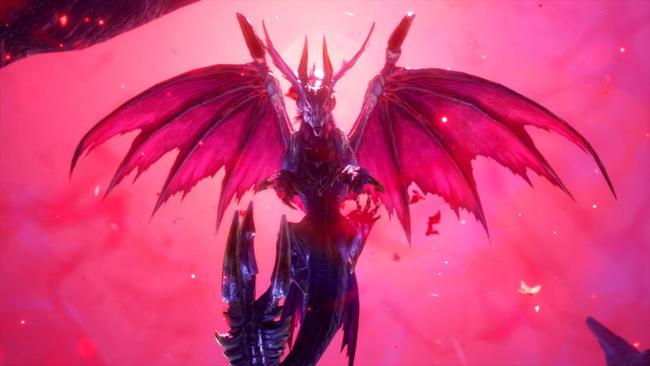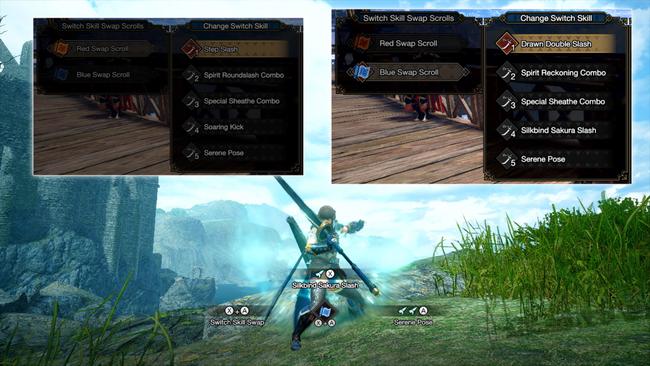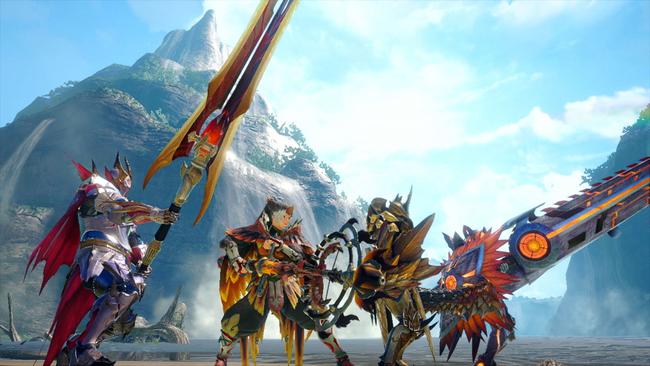Monster Hunter Rise: Sunbreak Review
I’ve got a confession to make – I wasn’t actually that excited for Monster Hunter Rise: Sunbreak during the lead-up to launch. While I greatly enjoyed my time with the base game last year, over the last 15 months I’ve come to realize that many of the changes that the game has made to the series’ formula didn’t really gel with me. Rampage Quests are the most obvious example, since it seems that I was far from the only one that outright disliked them by the end, but they were far from the only issue I had with the game.
It certainly didn’t help that the game was blatantly unfinished at launch either, meaning that by the time embargo lifted and all of my friends had the chance to play the game for themselves, I was already burnt-out. Despite everything, I always knew that I’d be back for Sunbreak, regardless of how I felt. Monster Hunter is my favorite series, through both good times and bad, and Monster Hunter expansions never fail to offer more than enough content to justify returning to see exactly what they have to offer. It’s a happy coincidence, then, that Sunbreak is one of the most content-packed expansions yet.

I won’t go over all of what makes Monster Hunter Rise different from the rest of the series. After all, I reviewed the base game last year, and there’s nothing I can say about my feelings now that really contradict my thoughts from then. Instead, let’s talk about content – specifically, what Sunbreak brings to the table. New and returning monsters are obvious, of course; what’s more interesting are Switch Skills. If you ever played Monster Hunter Generations, then you’ll already have an idea of what to expect. They’re options that you can use to tweak little aspects of how your weapons work. They can be minor, such as allowing Gunlance’s quick-reload to also block attacks if timed correctly with the trade-off of reloading less ammo, or they can be more significant, such as changing up Greatsword’s entire playstyle into a more combo-oriented affair, rather than strictly charging up well-timed attacks.
As soon as you start Sunbreak, you’ll be given the ability to set two loadouts for each weapon type, and at nearly any time you can hold down the left-trigger and press X+A (or your controller layout’s equivalent on PC) to switch from one loadout to another. While I have my doubts that most players will use this feature to the best of its ability, it’s undeniable that Switch Skill Swap gives players a ton of power to choose how they want to hunt. Some later armor sets even play around with the concept, encouraging you to time your swaps for both offensive and defensive purposes with exclusive skills tailored around the idea.
Another change that players will run into with every hunt is the addition of Morphed Wirebugs, which will apply a passive buff to players whenever they Wyvern Ride a monster during the duration the specially-colored Wirebug is in your inventory; Ruby Wirebugs buff the damage that a finisher will deal to a monster, while Gold Wirebugs will increase the frequency of material drops from attacks dealt while riding.

Finally, and perhaps the biggest change, is the ability to wallrun without expending a Wirebug first. Or, put another way, you can wallrun even after a mid-air evade – or even by just running into a wall on the ground. It’s hard to overstate just how much of a game-changer this is in practice, as the overall act of wallrunning has become significantly smoother. No longer do you have to worry about whether or not to mid-air evade to get some extra hangtime, as you won’t be sacrificing your ability to wallrun just by doing so. No longer do you have to awkwardly shoot yourself at an angle to climb a wall, as simply running up to one will seamlessly allow you to scale it.
All of these changes mostly amount to quality-of-life features in practice, but it’s nice to see refinement, even if it’s not as immediately exciting. All of these little changes added up to make playing through Sunbreak and into the post-game a much smoother experience, and I’m sure many other longtime players will find themselves feeling the same. With that being said, the headliner new feature is one that players will mostly be unable to experience in multiplayer and that is Follower Quests.
Followers are a new feature to Sunbreak, where NPCs will set out with you on hunts. Now, with the exception of some Urgent Quests where specific NPCs will join you and your party, you’ll only ever be able to hunt with these NPCs in specifically-marked hunts that are locked to single player only. This is a bit of a shame, since the fact that NPCs will fight alongside you during Urgent Quests proves that the system didn’t necessarily have to be locked to hunting alone, but it does feel like a bit of a nitpick when the rest of the feature is as fully-equipped as it already is.

Now, there are two types of Follower Quests – Support Surveys, which allow you to choose any 2 Followers to hunt specific monsters with you, and more general requests which are locked to a set configuration of Monsters and Hunters. Completing the latter will eventually unlock those NPCs for use in Support Surveys, as well as gradually unlocking a new weapon tree for every weapon type. Some NPCs even occasionally gift full armor sets based on the character in question. Every Follower has their own unique tendencies; some will always attack the monster, and rarely heal you. Others might be more reactive, and will instantly try and help you whenever you get stuck in a bind. During Support Surveys, you can choose which weapon Followers can use. Some of them support up to 5 weapon types, though there’s much less customization on that front in the bespoke requests.
While neither Senior Staff Writer Josh Torres or I spent the time calculating the specific HP values of monsters in Follower Quests versus the same monster when hunted solo, both of us felt that monsters likely abide by single player HP scaling. Even if they don’t, it’s clear that if you’re unable to play with anyone else – if you’re offline, or playing during a review period when the other players you know have code are unavailable to hunt – it’s a great way of grinding out monster parts, even if its usefulness falters by the end of the game.
That’s about it as far as new features, so what about new monsters and locations? There isn’t all that many surprises left that Capcom hasn’t yet revealed themselves, sadly, but the new monsters that have been added to the game are a lot of fun. The new subspecies in Blood Orange Bishaten, Aurora Somnacanth, and Magma Almudron are very unique takes on their respective monsters. Returning favorites such as Gore Magala, Seregios, and Astalos all make the jump to the 5th generation with aplomb. Returning from Monster Hunter 2, the Jungle map was always a favorite of mine and the jump to a seamless map without any loading zones only improves matters, let alone the additions to its layout. The new Citadel map is absolutely massive, and filled with tons of secrets for players to discover both during and outside of hunts – perhaps even a little too big, though it never quite becomes unmanageable when going toe-to-toe with monsters.

The overall structure of Sunbreak is also fairly different, with the game abandoning the split between Village and Hub quests as it returns to the one-size-fits-all solution that Monster Hunter World employed. Strikingly enough, much like with that game, Sunbreak sees a considerably higher focus on cutscenes. Many Urgent quests end with a shockingly well-animated in-engine cinematic to help push the story forward. It’s not an amazing story, of course, but their presence never gets in the way of things, and does a much better job at setting the tone than perhaps any other story in the series’ history. In other words, the experience of playing through Sunbreak to the credits is great, which makes the feelings I have about the endgame all the more conflicting.
Let’s get it out of the way, first. Sunbreak’s endgame is definitely better than the base Monster Hunter Rise. For one, Rampages are entirely gone, as are Apex monsters. Instead, they’ve been replaced with an entirely new type of monster – Afflicted, or Anomaly, monsters. Unfortunately due to the nature of Sunbreak’s review embargo, I am unable to go into exact detail why I found them disappointing. A more charitable interpretation of the restrictions might be that with the announced Title Update roadmap, that the current endgame will mean little in the long run. I don’t necessarily disagree, but it still irks me that I’m unable to explain the hows and the whys of how this system works. So, you’ll just have to trust me when I say that while the system is a step-up from the base game in many ways, there are some key distinctions that hold it all back. At the same time; it’s not enough to majorly detract from my experience.

Whereas Rise left me wholly disappointed the more I looked back on the game, it feels like the few issues that I have with Sunbreak are likely to be improved upon as the expansion continues to receive updates – and it’s not like the current state of the game is bad by any stretch of the imagination. I could nitpick about how it adds less monsters to Rise than Iceborne did to World, but that feels unfair when you look at what else the expansion brings to the table, as well as what’s ahead. That’s not to say that I’m judging Sunbreak for what it can be, but rather as some reassurance for anyone that might be heading into the expansion feeling a bit underwhelmed by what’s been shown. Sunbreak is already one of the best expansions that the series has had, and it’s only going to rise up that list from here.